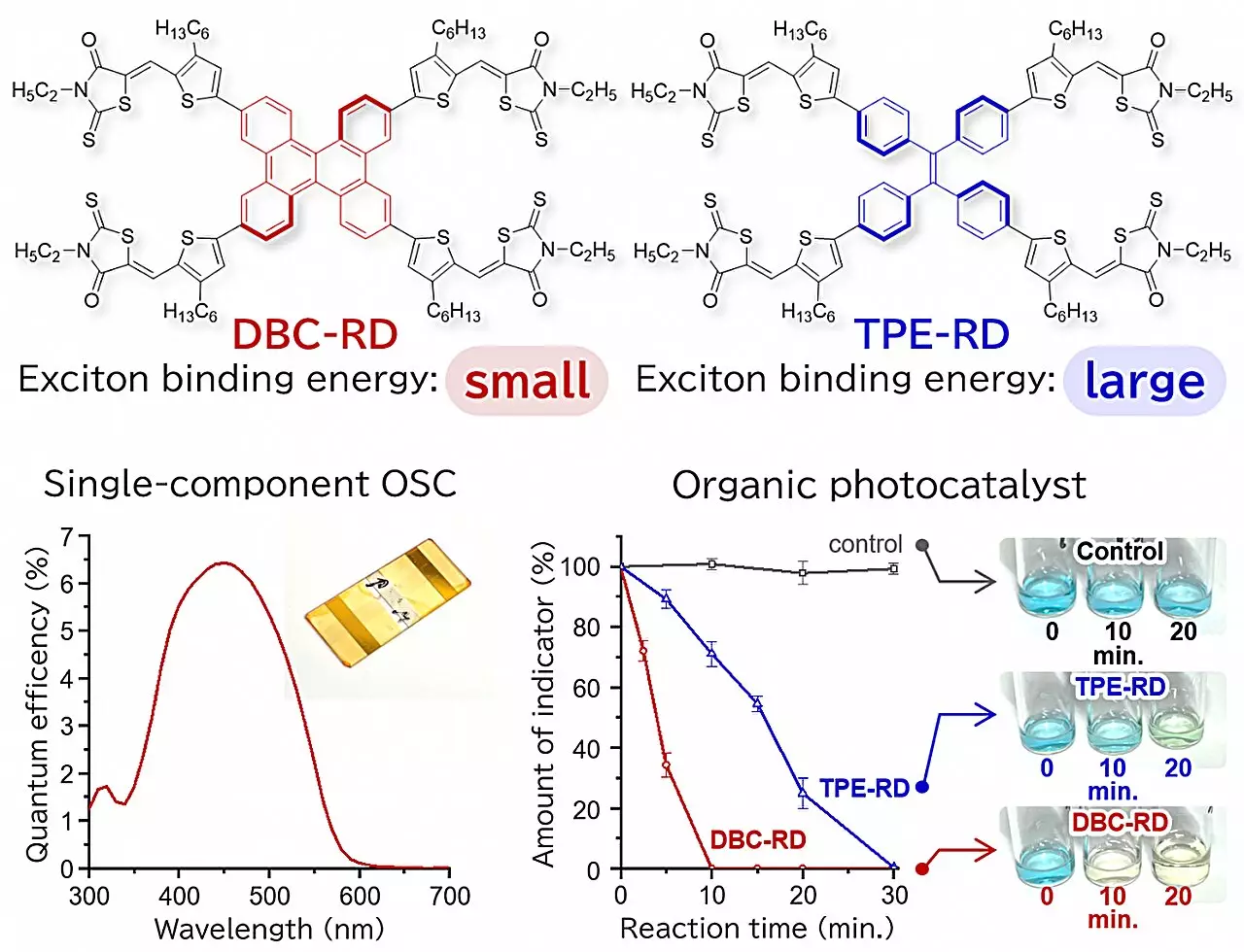As the world grapples with the consequences of climate change, the demand for renewable energy sources has become more pressing than ever. Solar power stands out as a pivotal player in the transition to a sustainable future. To maximize the benefits of solar energy, innovations in optoelectronic devices, specifically solar cells, are crucial. Recent research from Osaka University has shed light on a groundbreaking approach to enhance the efficiency of these devices through molecular manipulation.
At the heart of organic solar cells lies the challenge of effectively converting light into electrical energy. This process depends significantly on how well light-absorbing organic molecules can generate free-charge carriers, the particles responsible for conducting electricity. A key factor in this conversion is the exciton-binding energy, which determines how readily these carriers can be produced. The crux of the issue is this: while lower exciton-binding energy facilitates greater charge generation, creating solid-state molecules that achieve this has been a long-standing obstacle in material science.
The research team made a breakthrough by investigating how molecules aggregate in solid materials. Their focus was on star-shaped organic molecules, differentiated by either a flexible or a rigid central structure. Interestingly, in solution, both types of molecules exhibited similar behavior. However, once they were arranged into solid films, their performance diverged dramatically. The rigid molecules displayed superior stacking abilities, forming compact structures akin to stacked plates that lowered their exciton-binding energy. In contrast, the flexible molecules floundered in terms of arrangement, resulting in diminished charge generation capabilities.
To validate their findings, the researchers created single-component organic solar cells and photocatalysts using both types of molecules. The experiments revealed that devices built from the rigid molecules not only performed better in generating free-charge carriers but also set a new benchmark for efficiency in organic solar technology. This confirmed that molecules organized in a manner that fosters aggregation can indeed enhance device performance by reducing exciton-binding energy.
The implications of this research extend well beyond the immediate findings. By advancing our understanding of molecular structure and behavior, this study paves the way for the design of next-generation organic optoelectronic devices. As researchers and engineers harness this knowledge, we can anticipate a renaissance in solar technology, leading to more efficient resources that can be seamlessly integrated into various applications—from flexible solar panels to lightweight energy solutions for mobile technology. As we confront the intricacies of climate change, the potential for innovation in solar efficiency offers a glimmer of hope in our pursuit of a sustainable planet.

